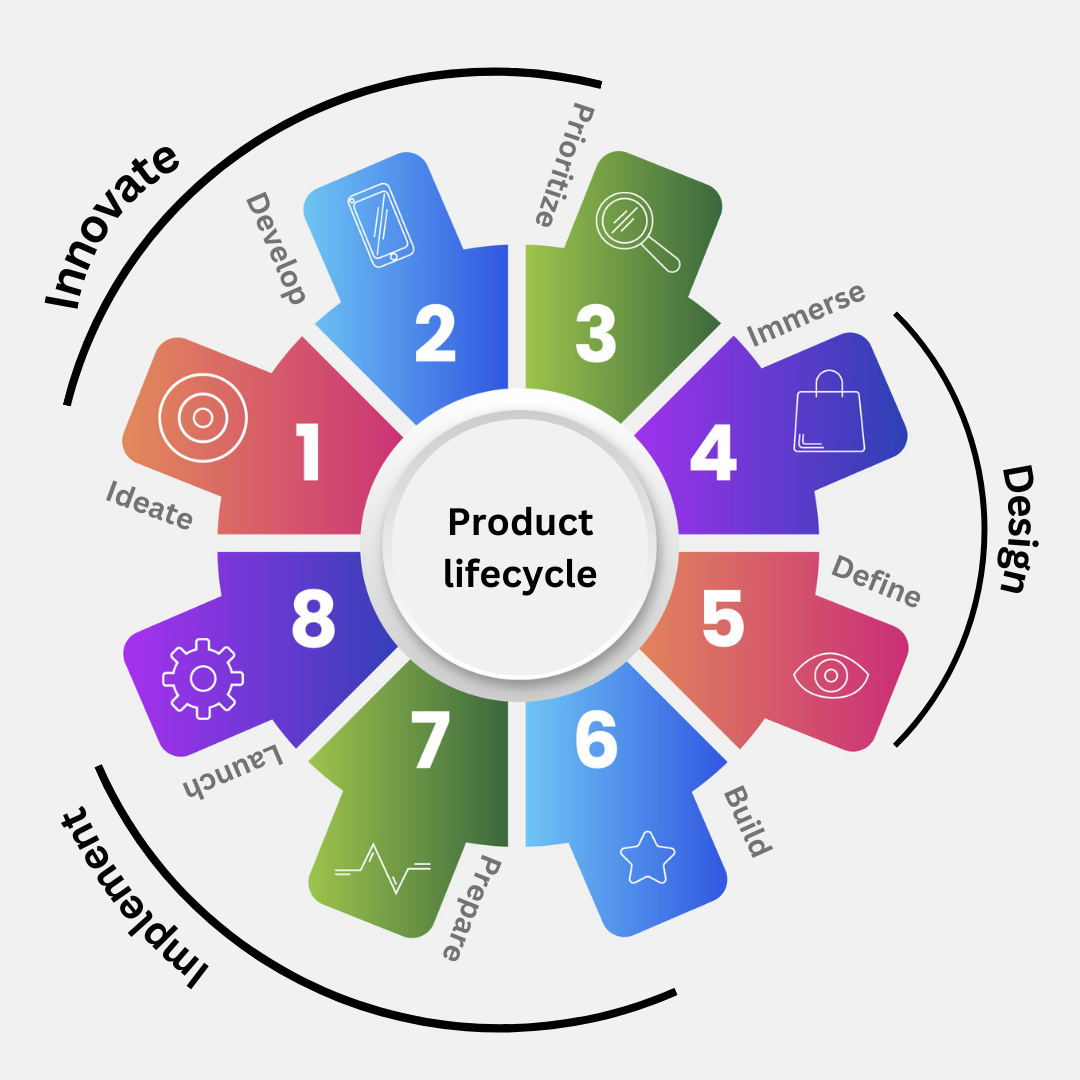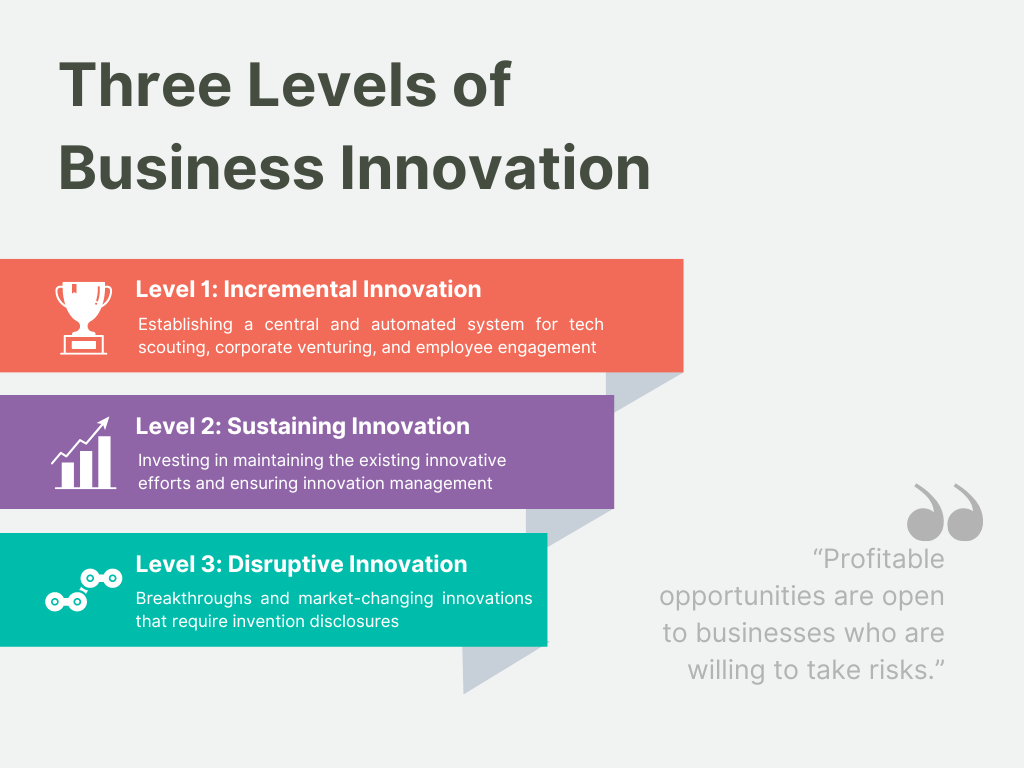It’s 2004, and Sunder Pichai just joined Google as a product manager. Almost immediately he became the bridge between the product management team, innovators, customers, stakeholders, and the sales teams.
He set the bar for product managers to go beyond their usual responsibilities of defining the product vision, product innovation strategy, and roadmap, and ensuring that the end product aligns with business goals.
Why this product manager example though?
We picked Mr. Pichai as an example to initiate the discussion around the role of product managers in driving innovation for two main reasons:
- He fueled the spirit of creativity and innovation giving Googlers the green light to pursue their passion projects through the famous “20% time” policy.
It was like saying, “Hey, want to spend part of your workweek building a time machine or inventing a teleportation device? Go for it!” - He championed a culture of collaboration. He knew that great ideas often come from bouncing thoughts off one another, so he made sure everyone felt comfortable sharing their crazy, out-of-the-box ideas in brainstorming sessions.
This freedom to experiment led to some of Google’s most game-changing innovations, from self-driving cars to Google News. Also, Pichai’s leadership and support for innovation culture helped Google attract top talent and maintain its position as a leading innovator in the technology industry.
He’s a product manager who bent the traditional roles and responsibilities of a product manager to drive innovation and cultivate a supportive and collaborative environment within teams.
But the truth is, only 13% of organizations across the globe understand the role of product managers and product management in innovation.
This is why they struggle to innovate because their product management teams only focus on day-to-day operations, with no attention to the new product lifecycle management.
Or, should we say the new role of product managers in the initial phase of the product life cycle.

But what does an innovation product manager do?
Organizations fail to innovate when their product management teams only prioritize the product lifecycle and not innovation from the beginning.
But at most organizations, there’s a lack of understanding about the role of product managers in innovation.
Picture this: you’ve got a team of product managers who are like the conductors of a symphony, orchestrating the entire product lifecycle from conception to launch. But while they’re great at keeping things running smoothly, they’re also the secret sauce for innovation within the organization.
Take, for instance, the story of Airbnb. Sure, they’ve got their operations humming like a well-oiled machine, but did you know that it was their product managers who dreamed up game-changing features like “Experiences” and “Airbnb Plus”?
These innovations didn’t just happen by chance; they were the result of tireless experimentation, user feedback, and out-of-the-box thinking from the product team.
An innovation product manager brings together innovation management and product management. How do they transition from an operational to an innovative product manager? Through liberty!
Since product managers have a thorough knowledge of their customer profiles and existing market gaps, they can lead game-changing innovations.
Good leaders have a massive impact on whatever goes within the organization and that’s how product managers can drive innovation.
But here’s the kicker: despite all the evidence pointing to the importance of product managers in driving innovation, many organizations still view them through a narrow lens, focusing solely on their operational role. It’s like having a Ferrari in the garage and only using it to run errands!
Why is innovation important in product management?
Innovation and product management go hand in hand. Without integrating aspects of product management and innovation management tightly, we risk becoming another company failure story no matter how strong your current foothold is in the market.
For instance, for over a century, Kodak was synonymous with quality photography. But when the world of photography began to change, Kodak product management teams couldn’t keep up with the pace and knowledge.
They stuck to their product lifecycle and dismissed the emerging trends.
Here’s why innovation is absolutely crucial in product management:
#1 Staying Ahead of the Curve
In today’s fast-paced world, standing still is akin to moving backward. Innovation keeps products fresh, exciting, and aligned with the ever-evolving needs and expectations of customers. It’s the difference between being a trendsetter and playing catch-up in a rapidly changing market.
#2 Meeting Customer Needs
Innovation allows product managers to anticipate and address customer needs in ways that go beyond the status quo. By constantly pushing the boundaries of what’s possible, product managers can deliver solutions that not only meet but exceed customer expectations, fostering loyalty and satisfaction.
#3 Competitive Advantage
In a crowded marketplace, differentiation is key. Innovative products give companies a competitive edge by offering unique features, experiences, or value propositions that set them apart from competitors. This differentiation can be a game-changer, attracting new customers and retaining existing ones.
Related Read: How the largest MNCs figured out the way to innovation?
#4 Driving Growth
Innovation fuels business growth by opening up new opportunities for revenue generation and expansion. Whether it’s through the introduction of new products, features, or business models, innovation drives demand, attracts investment, and propels companies toward success.
#5 Fueling Creativity and Collaboration
Innovation is like a shot of espresso for your team’s creativity. When you’re constantly pushing the boundaries, exploring new ideas, and solving fresh challenges, it sparks those creative juices and gets everyone’s imagination firing on all cylinders. Suddenly, brainstorming sessions feel more like jam sessions, with ideas bouncing off the walls and excitement in the air.
When you’re tackling innovative projects, you’re not just working in silos; you’re bringing together diverse perspectives, skill sets, and backgrounds to tackle problems from every angle. It’s like a big, creative potluck where everyone brings something unique to the table, and the end result is greater than the sum of its parts.
#6 Empowering Ownership
There’s nothing like the feeling of ownership and pride that comes from seeing your innovative ideas come to life. When teams are given the freedom to innovate, they feel a sense of ownership over their work and are more invested in its success. It’s like planting a seed and watching it grow into a beautiful garden—it’s your baby, and you want to see it thrive.
#7 Boosting Morale and Engagement
Let’s face it: working on innovative projects is just more fun. It’s exciting, it’s energizing, and it gives teams a sense of purpose and excitement that can’t be beat. When teams are engaged in innovative work, they’re more motivated, more passionate, and more likely to go the extra mile to make magic happen.
Related Read: Love Thy Users? Nurture Thy Employees!
In essence, innovation isn’t just a nice-to-have in product management—it’s a fundamental driver of success, enabling companies to thrive in an increasingly competitive and dynamic environment.
What innovation really means for product managers?
The meaning of innovation differs from one person to another. No seriously, people hold completely different answers to “What is innovation?”
And, the main problem that we have identified in organizations is that they often see innovation as the process of working on something new.
It can be a technology, product, service, feature, or functionality. Although the end result of innovation does give us something novel, the true innovation process is not about something new.
It’s about solving challenges, identifying opportunities, and finding new ways to deliver value to customers.
Product managers essentially find the gaps, desires, interests, and problems, and imbibe that into their product innovation strategy.
For them, innovation means change, transformation, and solution which is faster, cheaper, easier, and more reliable.
Product managers don’t need to be disruptors or innovators, just facilitators when collaborative product innovation happens.
Here’s a quick glance of business innovation types that product managers can facilitate.

How can managers get all employees involved in innovation?
A creative product manager understands that modern product management means bringing all hands in.
So how can product managers encourage innovation within their teams?
#1 Make Innovation Everyone’s Role
Quite ironic how we are talking about the role of product managers in innovation, but it is actually every single employee within an organization who is capable of driving innovation.
A manager of product innovation just needs to provide an environment and idea and innovation management system that encourages ideas from across the organization and even makes sharing them fun.
Let us tell you something very interesting and research-backed: product teams yearn to lead their own innovative projects and take charge of their work. It’s called intrapreneurship.
So, it’s just a matter of providing them with the right support, tools and telling them to do what they want.
When they land on something highly explorative, go deeper into those ideas.
#2 Encourage Teams to Lend an Ear to Their Customers
Encourage your team members to just listen and collaborate with their end users. More often than not, you customers share their Wishlist items with you or a nasty bug that’s been bothering them in your product. And voila!
You now have a new idea to develop and an incremental innovation prospect. And since your people are always in direct contact with the customers, they become the best salespeople themselves.
By just listening, you’ll know where you need to put your efforts, which innovation challenge you need to pick up next, which feature needs improvement, and what is their wish list that you can turn into reality.
Their feedback is not just invaluable – it’s your strongest lead. And product managers must tell every single individual to bank on it.
#3 Turn to Collaboration, Empowerment, Diversity, Camaraderie, and Sense of Belonging
Did you know that large organizations pursue invention disclosures that have at least one co-innovator? That means inventions that have more than two inventors listed have a high chance of getting picked by organizations to be developed and commercialized.
Successful product managers recognize the value of collaboration and turn innovation into a team effort.
They foster an innovation culture that supports cross-functional collaboration and unlocks the collective innovation of their teams, leading to breakthrough ideas and solutions.
However, sometimes, product managers get so focused on their own ideas and perspectives that they forget to look around and see what’s right in front of them.
It’s like having a bunch of puzzle pieces scattered across the room, but nobody bothers to put them together to see the big picture.
When product management teams break down these silos and invite diverse voices to the table, they tap into a rich tapestry of knowledge and expertise.
In essence, product managers have a treasure trove of perspectives and experiences right under their noses—they just need to be willing to dig deep, listen closely, and embrace the wealth of insights that their own organizations have to offer.
#4 Bring in a Professional Idea Management Software, Followed by Invention Disclosure Software
Why idea management software? Without the right tools to capture and harness ideas, you risk ideas getting lost in the ether, never seeing the light of day.
Why invention disclosure software? Because you’ll stumble across ideas
Ideally, these two software should be in one module and integrated with your existing technology stack. You don’t need to break your neck if you get the right tool.
Related Read: Don’t Buy Invention Disclosure Software Until You Review This
Look no further than companies like Salesforce, which uses idea management software to crowdsource ideas from employees and customers alike, fueling innovation and driving business success. Or take a page from the playbook of GreyB’s innovation program, which has generated thousands of ideas and sparked innovation across the organization.
So, if you want to tap into the full potential of your team and drive innovation from the ground up, idea management software is the way to go. It’s like giving your organization wings and watching it soar to new heights of creativity and success.
#5 Launch Regular and Interactive Innovation Challenges
Turn to open innovation to get all your employees on board with your innovation goals.
In the words of the father of open innovation, Chesbrough, “open innovation is a more distributed, more participatory, and more decentralized approach to innovation.”
Open innovation in product management teams is a great way to improve one’s internal capabilities and access external knowledge of innovation besides R&D departments.
Related Read: Make Open Innovation Your Competitive Advantage: Here’s How!
Concluding Remarks
There’s no innovation manager vs product manager debate anymore. Either one and the other are the same or they complement each other.
The lines are blurring. There is a free flow of ideas, conversations, and collaborations among the product management and innovation management teams. Often, organizations are now advocating for product managers to take care of innovation management and ideation initiatives as well.
And that product managers are the real customer advocates and representatives cannot be truer. These managers play an important role in driving innovation



